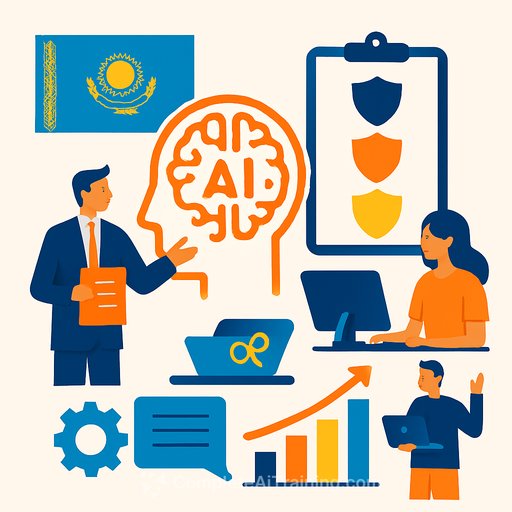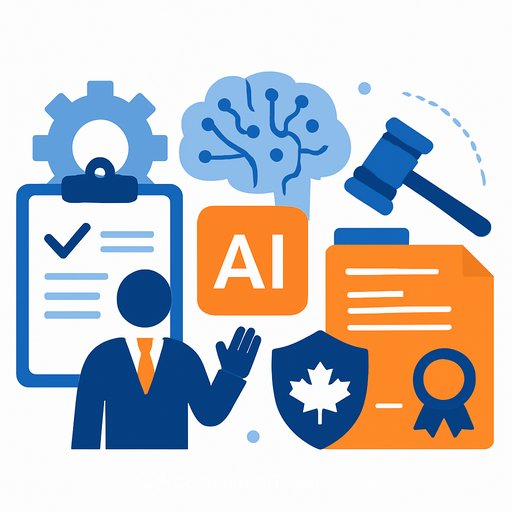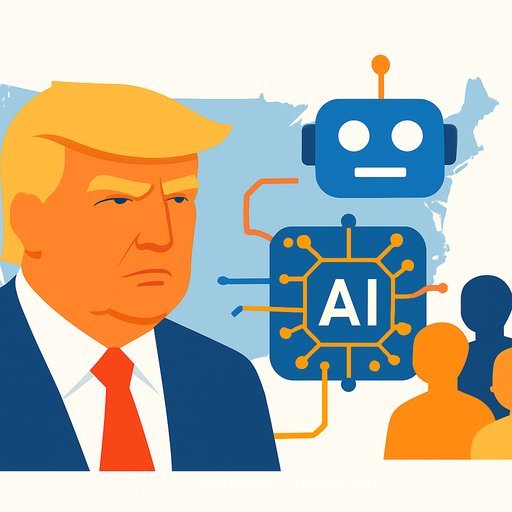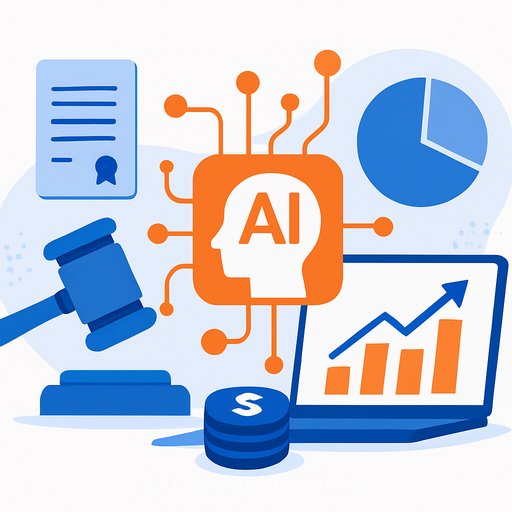Kazakhstan's AI Law: What Legal Teams Need to Know Now
Kazakhstan has enacted a dedicated artificial intelligence law and followed it with parliamentary hearings to probe its impact. The framework centers on public safety, personal data protection, and innovation, with risk-tiered oversight and explicit user rights.
If you advise on technology, data, or compliance in Central Asia, this is a material shift. Below is a concise brief you can act on.
The core legal architecture
Lawmakers approved a package of AI provisions addressing culture, education, family, and state control. The law lays out baseline rules for development and deployment across public and private sectors.
Users gain key rights: to understand how an AI system works, to request a review and explanation of its decisions, and to refuse AI interaction. These are enforceable vectors that will influence product design, disclosures, and grievance handling.
Explicit prohibitions and audits
The law bans digital technologies that control behavior, exploit emotions, conduct social assessments, or collect personal data without consent. This draws a clear line on manipulation and covert profiling.
Mandatory audits will monitor compliance. Expect audit readiness to become a standing obligation for providers and high-impact deployers.
Risk classification and critical infrastructure treatment
AI systems will be classified by risk level and degree of autonomy. High-risk systems will be treated as critical information and communication infrastructure and placed under special control.
Operation of high-risk systems will be regulated by law, implying heightened obligations on security, reliability, incident reporting, and oversight.
Copyright: AI-only works excluded; prompts may be protected
Works created exclusively by AI, without human creative input, will not receive copyright protection. This narrows protection for fully synthetic outputs.
User prompts, where they reflect creative input, may be recognized as intellectual property and protected by copyright. Contract terms and evidence practices around prompt authorship will matter.
Policy direction from parliamentary hearings
Ministers outlined a three-pillar AI strategy: institutional environment, infrastructure, and human capital. Connectivity is expanding through OneWeb, Starlink, testing by Shanghai Spacecom, and an agreement with Amazon's Project Kuiper to begin service next year.
Kazakhstan will open the International Center for Artificial Intelligence (alem.ai) to convene talent, researchers, entrepreneurs, and officials for domestic AI solutions.
Crypto as an enabling rail
Officials signaled support for crypto use in AI-related commerce: prospective options include paying for goods and services in cryptocurrency, state mining, a tenge-denominated stablecoin, and a crypto reserve.
For legal teams, this intersects with AML/CFT, licensing, consumer protection, e-money, FX controls, and custody risks. Expect rulemaking and pilots.
Workforce and education commitments
The government plans to train 1 million people in AI skills within five years, spanning schools, universities, civil service, and business. Today, 27 universities and six research institutes across 11 regions involve 479 scientists in AI projects.
Thirty higher education institutions run 38 AI programs. From 2025, AI skills will be integrated across all programs. Currently, 62 AI projects worth 9.7 billion tenge (about US$17 million) are underway.
Ethics, safety, and content labeling
Lawmakers highlighted ethics and security as priority risks. AI-generated content labeling will be required, echoing measures introduced in China.
Public opinion is split: 40.5% view AI's impact positively; 37% view it rather negatively, citing concerns that learning could become superficial. Expect continued scrutiny in education and public-sector deployments.
Public safety use cases
Parliament emphasized AI for managing water resources: analyzing levels, quality, and pollution to forecast floods and droughts and prevent disasters. The same tools can help reduce man-made accident risks.
Comparison point for counsel
The risk-based approach tracks global practice. For benchmarking obligations and governance patterns, see the EU's AI Act framework, which separates systems by risk and imposes targeted controls.
EU AI Act: risk-based approach overview
Immediate action items for legal teams
- System inventory: Map all AI systems in use or procurement. Classify by risk and autonomy. Identify potential "high-risk" candidates.
- User rights flows: Implement mechanisms for explanations, human review, and opt-out. Update privacy notices and product UI accordingly.
- Consent and profiling: Remove or gate any emotion analysis, social scoring, or behavior-control features. Tighten consent capture and revocation.
- Audit readiness: Establish audit trails, model documentation, data lineage, and incident logs. Assign owners and testing cadence.
- Security controls: Align high-risk systems with critical infrastructure safeguards, including resilience, access control, monitoring, and reporting.
- IP terms: Update contracts to address AI-only outputs, human authorship, and ownership of prompts. Add warranties and indemnities for third-party content.
- Vendor management: Require transparency, evaluation artifacts, and compliance covenants from AI suppliers. Include termination and remediation triggers.
- Labeling: Add AI-generated content markers and watermarks where required. Define scope, placement, and retention.
- Crypto exposure: If exploring payments or stablecoins, align with licensing, AML/CFT, sanctions, and consumer protection requirements.
- Training and governance: Stand up an AI policy, risk committee, and engineering checklists. Provide targeted training for legal, product, and data teams.
What to watch next
- Secondary regulations detailing audits, risk categories, and critical infrastructure controls.
- Enforcement posture, especially around manipulation, emotion inference, and data without consent.
- Sector guidance for education, public services, and utilities (water management).
- Crypto pilot programs and any tenge stablecoin framework.
Upskilling your team
If you need practical training paths for legal and compliance roles working with AI systems, review curated options by job role.
Your membership also unlocks:






